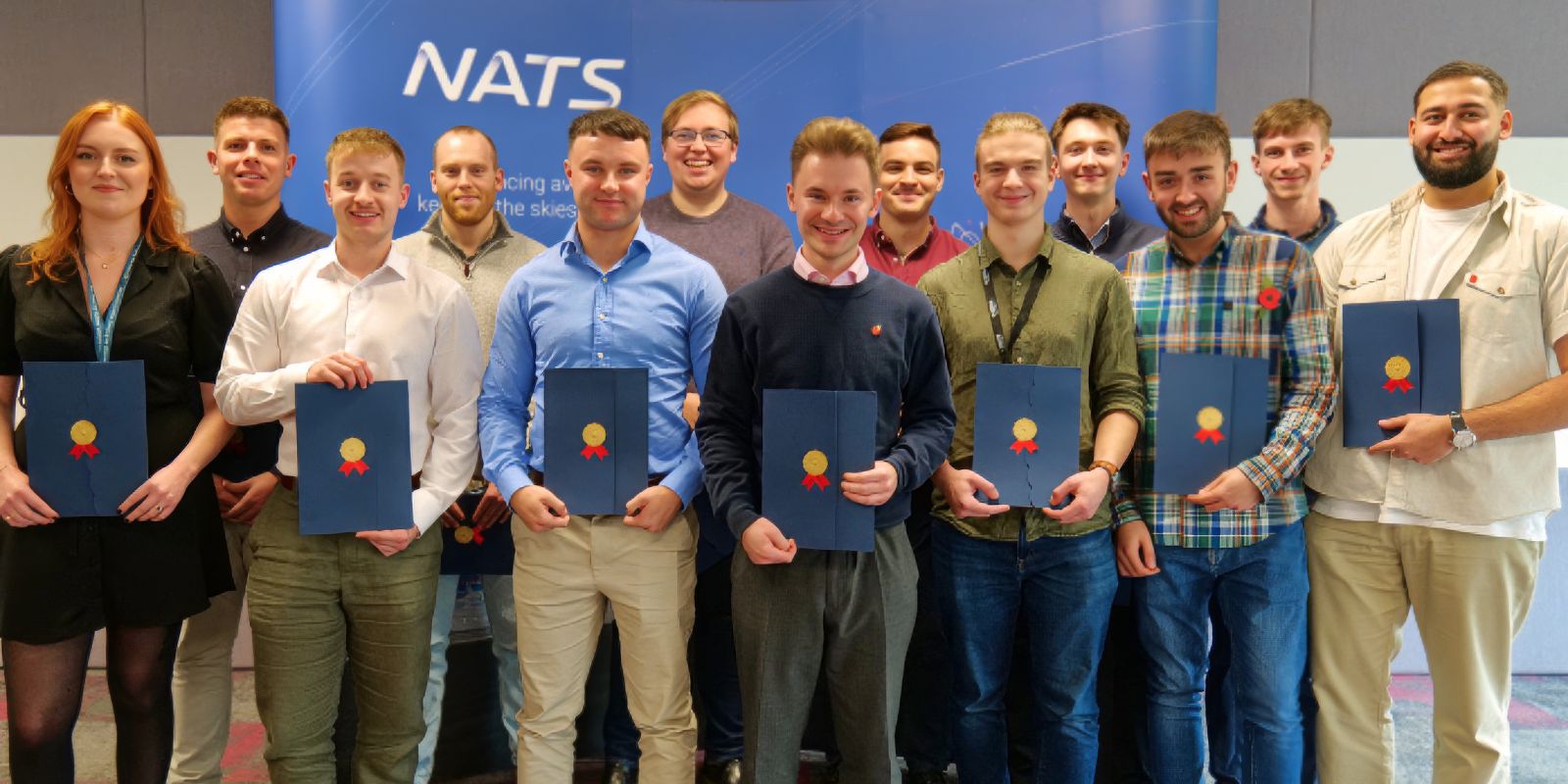
Kris Kolandjian is a recent graduate from our 12 month Level 5 Trainee Air Traffic Control Apprenticeship and has shared his experiences transitioning from the training college into becoming a Student Air Traffic Controller.
Transitioning from Trainee Air Traffic Controller to a Student Air Traffic Controller
Throughout my time as a Trainee Air Traffic Controller, it was vital to be fully focused on the current phase of training, taking each step one-by-one, rather than thinking too much about the future. As a result, the feeling of elation I had after passing each phase of training felt the same as receiving my degree at university. The countless hours of chipping away at the complex theory, and the rollercoaster of emotions that is practical training, all culminated in receiving my Student Licence.
After this, I was excited to get started with my which would authorise me to provide air traffic control services for my specific sectors. Although I had been assigned to London Area Control, I did not yet know which airspace sectors I would be training on, but this did not stop my learning – I printed out the London Area Control Manual of Air Traffic Services and got to reading!
I still had one more mountain to climb before becoming a SATC, which was the End Point Assessment period. I began studying the relevant oral material as soon as possible, so that I would be able to strike a balance between being prepared for the End Point Assessments, whilst also getting a head-start on learning material for the Unit Endorsement Course in my free time.
The practical side of the End Point Assessment period ended up being really useful for learning new skills ahead of the Unit Endorsement Course. The simulator runs lasted longer (improving our endurance) and we were able to focus on the hand-over and take-over side of controlling, which is one of the core aspects of a controller’s work. We also had the opportunity to split the sector and control side-by-side with another TATC, where communication was vital to maintaining a safe, orderly and expeditious flow of traffic.
When I finished the apprenticeship, I was told that I would be on the Clacton/Daventry Unit Endorsement Course, and although I was eager to get started it felt as though I was stepping into the unknown. I was slightly worried that I might struggle to adapt to the new learning environment, which was a similar feeling to the one I had prior to starting at NATS. The main change was the difference between the learning styles at the college and on Unit. In the college, the instructors guide you through the learning material and there is rostered time dedicated to learning the theory. However, I knew that on Unit, the theoretical learning would be much more self-led; the SATC has a much greater responsibility for their own knowledge of the airspace and associated procedures and must use their spare time to stay on top of everything.
Now that I am approaching the end of Phase 5 of my Unit Endorsement Course, I can comfortably say that this is true, however the training team are extremely supportive and their dedication to our progression (both on and off the simulator) cannot be overstated. I have already spent more time on the simulator during the Unit Endorsement Course, than I did throughout my entire time at the college, and it’s led to my controlling skills improving hugely. Also, moving from the routine of 8am-4pm to a shift pattern was definitely difficult to begin with, but as time passes, I feel as though I am adjusting well, and I definitely do not mind driving to and from work during super-off-peak times!
I am still a couple months away from live training, where I will be able to make use of my Student Licence, however it still serves as a constant reminder of how far I’ve come in the last 16 months. I still enjoy coming into work everyday and I don’t believe that will change anytime soon.
You can find out more about our TATC apprenticeship and register your interest here.








